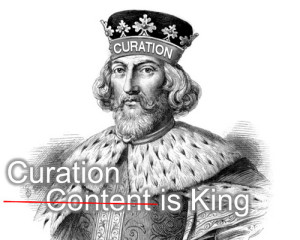 Lately, we’ve been touching upon relevancy — of journalists, print newspapers, other news media publishing models — and evolution of all those entities as a result of trying to remain relevant to consumers and audiences. Today, let’s talk briefly about how brands and companies can use content creation (as part of their PR and ad campaigns) as the means to remain relevant.
Lately, we’ve been touching upon relevancy — of journalists, print newspapers, other news media publishing models — and evolution of all those entities as a result of trying to remain relevant to consumers and audiences. Today, let’s talk briefly about how brands and companies can use content creation (as part of their PR and ad campaigns) as the means to remain relevant.
In a September 17 article for AdAge, Ian Schafer, CEO of Deep Focus, points out that as consumer and media behavior shifts — about every decade or so — the industry talk about how brands must become their own content publishers intensifies. It’s a good thing, Schafer notes, as it has resulted in the past “in things like content sponsorships, custom publishing, advertorials and branded content.”
Digital agencies, however, were slow to adopt what Schafer calls “content-friendly media and creative financial models.” He says:
It’s time for that to change because the modern digital agency is equipped to lead the next era by thinking as much like a modern newsroom as it does a creative department.
If there’s one thing that we should have learned in this era of social media, it’s that people are being drawn to content not through publishers and pages, but through people and feeds. […] When we look at the success of content these days, there is often an inverse relationship between how good it is vs. how much we had to pay for people to actually see it. […]
We live in an era where everything can be disrupted. It is foolish to think that our own agency business models aren’t susceptible to that. If you’re not busy getting better at creating content that people will share, you’re putting your brands’ relevance at stake.
Engagement leads to reach, he says, as in, the “Newsroom” approach vs. “The Pitch.”
He elaborates:
That means implementing a frictionless process with quick client approvals, then tracking that content like a hawk and understanding when to pull the trigger on boosting which piece of content as it spreads.
Schafer’s suggestions for brands include:
- Optimizing content to maximize its shareability.
- Staying on top of trends and technology innovation to be able to help “clients to make decisions that are more reflective of the ways that media consumption is evolving.”
- Emphasizing content that’s consistent and always immediately available across many social networks while at the same time adapting to “evolving consumer habits.”
- Offering at least some content that was created by an editorial process: “Short, visual, ‘social quality’ content that people can immediately react to, and are proud to share.”
- Continuously developing creative assets for the channels or dissemination of content to ensure their proper and timely maintenance, and that the content that’s distributed is “highly visual, very timely, culturally allusive and not overproduced.”
 Keith Smith, a marketing consultant for the U.K.-based Seven Publishing, also thinks companies must increase their efforts in timely content creation as part of their PR campaigns. “The golden rule of having a successful digital presence or brand profile,” he says in his September article for The Holmes Report, “is also about creating great content.” The ingredients are simple: good content and “receptive audience,” but it gets trickier with how that content gets curated and delivered.
Keith Smith, a marketing consultant for the U.K.-based Seven Publishing, also thinks companies must increase their efforts in timely content creation as part of their PR campaigns. “The golden rule of having a successful digital presence or brand profile,” he says in his September article for The Holmes Report, “is also about creating great content.” The ingredients are simple: good content and “receptive audience,” but it gets trickier with how that content gets curated and delivered.
The answer, Smith suggests, is to partner with the right people and organizations to “create a single content strategy that flows through all channels.” Not all companies have the unlimited resources of the bigger companies to curate that content, while reigning in all its elements (“viral, mobile, social, search”), or hire a third party to do that.
It is possible, however, Smith says, even for smaller companies to channel content across many networks, in many formats, using different types of technology — a notion also expressed by Schafer — if the company adopts a fresh take on the traditional approach: again, Newsroom vs. The Pitch, only Smith calls it something else. He writes:
I’m arguing for companies to take an ‘Always-On’ approach to communications, instead of the more traditional campaign-led bursts. Imagine a communications channel that can be accessed through any device, anywhere by a company’s customers; read the latest customer magazine or watch ads on your phone, browse video content through apps and so forth — all designed to help define and build a company’s reputation and character.
So, yes, whatever you call it and however much money you have to spend on it, seems like creating timely, visual, shareable content and coming up with a distribution strategy that works across many channels, on many devices, and in many formats, are key to remaining relevant.
Images by Saad Faruque (top) and dull hunk (Duncan Hull).